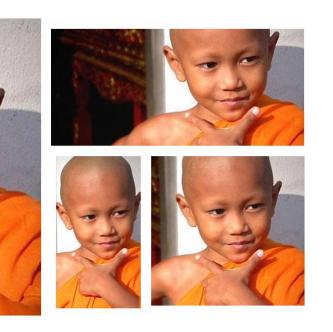Image Generation
2001 papers with code • 85 benchmarks • 67 datasets
Image Generation (synthesis) is the task of generating new images from an existing dataset.
- Unconditional generation refers to generating samples unconditionally from the dataset, i.e. $p(y)$
- Conditional image generation (subtask) refers to generating samples conditionally from the dataset, based on a label, i.e. $p(y|x)$.
In this section, you can find state-of-the-art leaderboards for unconditional generation. For conditional generation, and other types of image generations, refer to the subtasks.
( Image credit: StyleGAN )
Libraries
Use these libraries to find Image Generation models and implementationsDatasets
Subtasks
-
 Image-to-Image Translation
Image-to-Image Translation
-
 Image Inpainting
Image Inpainting
-
 Text-to-Image Generation
Text-to-Image Generation
-
 Conditional Image Generation
Conditional Image Generation
-
 Conditional Image Generation
Conditional Image Generation
-
 Face Generation
Face Generation
-
 3D Generation
3D Generation
-
 Image Harmonization
Image Harmonization
-
 Pose Transfer
Pose Transfer
-
 3D-Aware Image Synthesis
3D-Aware Image Synthesis
-
 Facial Inpainting
Facial Inpainting
-
 Layout-to-Image Generation
Layout-to-Image Generation
-
 ROI-based image generation
ROI-based image generation
-
 Image Generation from Scene Graphs
Image Generation from Scene Graphs
-
 Pose-Guided Image Generation
Pose-Guided Image Generation
-
 User Constrained Thumbnail Generation
User Constrained Thumbnail Generation
-
 Handwritten Word Generation
Handwritten Word Generation
-
 Chinese Landscape Painting Generation
Chinese Landscape Painting Generation
-
 person reposing
person reposing
-
 Infinite Image Generation
Infinite Image Generation
-
 Multi class one-shot image synthesis
Multi class one-shot image synthesis
-
 Single class few-shot image synthesis
Single class few-shot image synthesis
Most implemented papers
Generative Adversarial Text to Image Synthesis
Automatic synthesis of realistic images from text would be interesting and useful, but current AI systems are still far from this goal.
Spectral Normalization for Generative Adversarial Networks
One of the challenges in the study of generative adversarial networks is the instability of its training.
InfoGAN: Interpretable Representation Learning by Information Maximizing Generative Adversarial Nets
This paper describes InfoGAN, an information-theoretic extension to the Generative Adversarial Network that is able to learn disentangled representations in a completely unsupervised manner.
Conditional Image Synthesis With Auxiliary Classifier GANs
We expand on previous work for image quality assessment to provide two new analyses for assessing the discriminability and diversity of samples from class-conditional image synthesis models.
Density estimation using Real NVP
Unsupervised learning of probabilistic models is a central yet challenging problem in machine learning.
Large Scale GAN Training for High Fidelity Natural Image Synthesis
Despite recent progress in generative image modeling, successfully generating high-resolution, diverse samples from complex datasets such as ImageNet remains an elusive goal.
High-Resolution Image Synthesis with Latent Diffusion Models
By decomposing the image formation process into a sequential application of denoising autoencoders, diffusion models (DMs) achieve state-of-the-art synthesis results on image data and beyond.
Training Generative Adversarial Networks with Limited Data
We also find that the widely used CIFAR-10 is, in fact, a limited data benchmark, and improve the record FID from 5. 59 to 2. 42.
Glow: Generative Flow with Invertible 1x1 Convolutions
Flow-based generative models (Dinh et al., 2014) are conceptually attractive due to tractability of the exact log-likelihood, tractability of exact latent-variable inference, and parallelizability of both training and synthesis.
Semantic Image Synthesis with Spatially-Adaptive Normalization
Previous methods directly feed the semantic layout as input to the deep network, which is then processed through stacks of convolution, normalization, and nonlinearity layers.





















































































 CIFAR-10
CIFAR-10
 ImageNet
ImageNet
 CIFAR-100
CIFAR-100
 MNIST
MNIST
 Cityscapes
Cityscapes
 CelebA
CelebA
 Fashion-MNIST
Fashion-MNIST
 CUB-200-2011
CUB-200-2011
 FFHQ
FFHQ
 Oxford 102 Flower
Oxford 102 Flower

